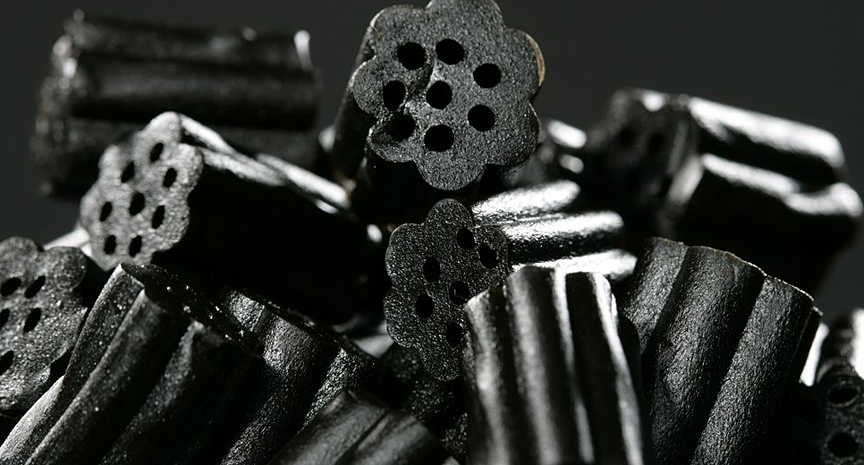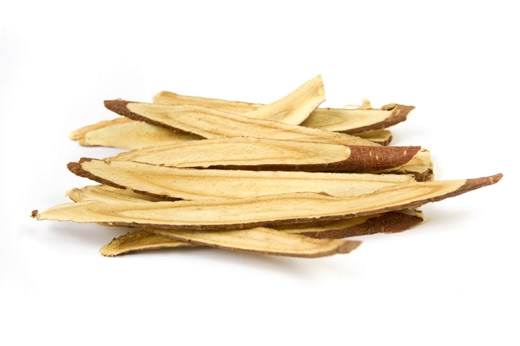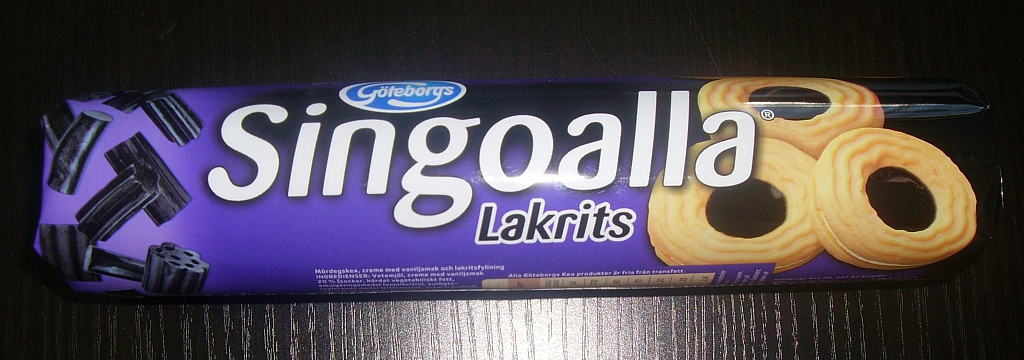For the love of licorice
One of the things that many Swedes miss when they leave Sweden, even if it’s only for a short time, is 'lakrits' - licorice.
-
 One of the things many Swedes love but Americans don't: licorice, especially salty licorice.
One of the things many Swedes love but Americans don't: licorice, especially salty licorice. -
-
Especially the salty variety, which is difficult to come across abroad. But what is licorice really?
-
 The root we love. Licorice grows wild in some parts of Europe and Asia. A perennial that grows 3- to 7-feet-high, licorice has an extensive branching root system. The roots are straight pieces of wrinkled, fibrous wood, which are long and cylindrical and grow horizontally underground. Licorice roots are brown on the outside and yellow on the inside. Licorice supplements are made from the roots and underground stems of the plant.
The root we love. Licorice grows wild in some parts of Europe and Asia. A perennial that grows 3- to 7-feet-high, licorice has an extensive branching root system. The roots are straight pieces of wrinkled, fibrous wood, which are long and cylindrical and grow horizontally underground. Licorice roots are brown on the outside and yellow on the inside. Licorice supplements are made from the roots and underground stems of the plant. -
-
According to University of Maryland’s Medical Center, licorice is a flavorful herb that has been used in food and medicinal remedies for thousands of years. Also known as "sweet root," licorice root contains a compound that is about 50 times sweeter than sugar.
-
 Licorice is everywhere - in chewing gum, ice cream, snus ...
Licorice is everywhere - in chewing gum, ice cream, snus ... -
Licorice root has been used in both Eastern and Western medicine to treat a variety of illnesses ranging from the common cold to liver disease.
-
 ... baked goods, brownies, cookies such as the traditional Götborgskex produced Singoalla.
... baked goods, brownies, cookies such as the traditional Götborgskex produced Singoalla. -
This herb has long been valued as a demulcent (soothing, coating agent) and expectorant (rids phlegm and mucous from the respiratory tract). It is still used today for a variety of conditions, although not all its uses are supported by scientific evidence. Licorice with the active ingredient of glycyrrhiza can have serious side effects. One human study found that a preparation of licorice may reduce body fat. In addition, taking licorice long term has a number of health risks. People who regularly take large amounts of licorice (more than 20 grams per day) may raise blood levels of the hormone aldosterone, which can cause serious side effects, including headache, high blood pressure, and heart problems.
-
Of course it isn’t just Swedes and Scandinavians who like salty licorice, saltier and stronger licorice is what most people in continental Europe prefer, though the Brits' favorite licorice is the sweet Allsorts. In Holland, where licorice candy is called “drop” and is one of the most popular forms of sweets, kids often make their own licorice soft drinks by putting a few pieces of licorice in a bottle with water and then shaking it to a frothy liquid.
-
Like many beloved things, licorice comes in every shape, form and as an ingredient to a long list of products these days — how about licorice ice cream, chewing gum, cookies, brownies or in Swedish snus ...?
-
-
